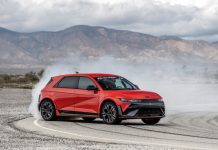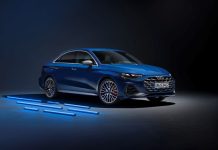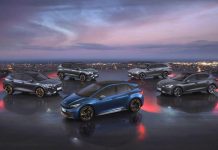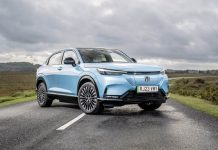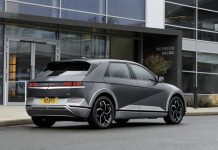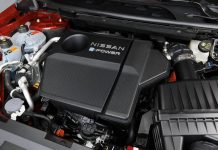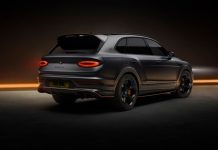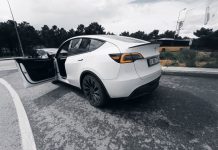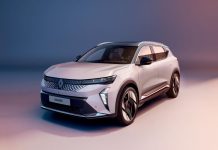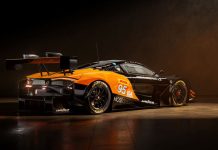Writer | Gökçer ALP (He was born in 1973. He is a graduate of Mimar Sinan University Fine Arts Industrial Design.)
Look at the comics published in 1950s and 60s which were telling about 2000s and you’ll see flying cars; but against the energy needs solved so that the cars could fly, those cars looked like Citroen DS. But what a wisdom, despite the technology and abundant energy sources to fly in the air, the design of the vehicles is still Citroen DS. This is actually the result of a phenomenon that we can call a little cinematographic: If you show people some things in shapes they’ve never seen before, they don’t recognise what you’re showing, you’ll have to explain as “these object will look like this in the future”. The easier way is to bring the objects they already know today into the future; so they can get what that object is, without an explanation. It’s the same reason that all the cars in the movie “I robot” were Audi R7 based with the reason all the cars in 1960s comics were Citroen DS based. There’s one more reason for that: Whatever the most technological and futuristic design you know, know and see in the environment you live in, you inevitably imagine the future based on it. There are 2 things to look at to understand where something is going, where it came from and where it is now. Transportation started on land, from there it passed to rivers and stagnant waters, then seas and oceans were crossed, and finally, air transportation started; Air transport is the most advanced in terms of both speed and technology used. So if we’re talking about transportation in the future, the hands will necessarily point to the sky. On the other hand, let it fly in the air as much as he wants, the transportation vehicles of the future will still remain automobiles as they will replace our cars today; visually, it should still look like a “car”. Look at the comics published in 1950s and 60s which were telling about 2000s and you’ll see flying cars; but against the energy needs solved so that the cars could fly, those cars looked like Citroen DS. But what a wisdom, despite the technology and abundant energy sources to fly in the air, the design of the vehicles is still Citroen DS. This is actually the result of a phenomenon that we can call a little cinematographic: If you show people some things in shapes they’ve never seen before, they don’t recognise what you’re showing, you’ll have to explain as “these object will look like this in the future”. The easier way is to bring the objects they already know today into the future; so they can get what that object is, without an explanation. It’s the same reason that all the cars in the movie “I robot” were Audi R7 based with the reason all the cars in 1960s comics were Citroen DS based. There’s one more reason for that: Whatever the most technological and futuristic design you know, know and see in the environment you live in, you inevitably imagine the future based on it. There are 2 things to look at to understand where something is going, where it came from and where it is now. Transportation started on land, from there it passed to rivers and stagnant waters, then seas and oceans were crossed, and finally, air transportation started; Air transport is the most advanced in terms of both speed and technology used. So if we’re talking about transportation in the future, the hands will necessarily point to the sky. On the other hand, let it fly in the air as much as he wants, the transportation vehicles of the future will still remain automobiles as they will replace our cars today; visually, it should still look like a “car”. What is the most advanced state of the car? Although tastes and colors vary, for the vast majority, the high point is sports cars. That is why individual transportation vehicles that will be used in the future will still be cars and will be able to fly to use the most advanced form of transportation, air transportation. Of course, all these predictions are shaped under the influence of the two basic things I just mentioned. If we look at the issue in terms of fuel and energy efficiency, environment, traffic, urbanization, flying cars are the scariest solution imaginable. Unless there is a brand new energy source that has no effect on the health of living things and has an unlimited cycle.
I’LL DRIVE IT MYSELF
Another approach regarding the cars of the future; are self-driving capsule-shaped devices. It is clear that those who propose this approach ignore the automobile as a means of pleasure, a status and lifestyle indicator. You cannot sell a capsule designed with the lowest requirements to a Ferrari owner driving at 300 km / h on Germany’s unlimited highways, or to a luxury-fancier owner of a Rolls Royce worth hundreds of pounds, not even the custom-made umbrella that came with the vehicle! There is no need to go that far; There are many drivers like me who don’t even like automatic gear. Because the car is a pleasure to “drive” and much of that pleasure comes from the feeling of being in control of that vehicle; automatic transmission takes half of the driving pleasure as it takes away the driver’s initiative in wheel-engine matching. For example, you cannot sell autonomous and self-driving cars to people like us.
VERTICAL TRAFFIC FLOW
Another approach regarding the cars of the future; are self-driving In recent years, many entrepreneurs, including Google, have started to offer solutions for the cars of the future. Many people liked Google’s individual tool very much, and I think it is a complete paradox of insight. You ask why? First one; Individual transportation has the biggest share in all of the problems we face today such as air and environmental pollution, heavy traffic, and climate change. Electric or hydrogen fuel cell vehicles cannot produce a permanent solution in this sense; Because as soon as you get used to the fact that such vehicles pollute the nature less, the number of these vehicles will increase exponentially and will cause similar problems to arise again. In addition, although it brings some solution to environmental problems, the traffic problem will increase exponentially. The logic of imagining flying cars is partly related to this traffic problem: a multi-level traffic flow. As the traffic intensifies, the flying vehicles will be directed to other virtual floors, or just like skyscraper elevators, the vehicles going in certain directions will join the traffic on certain floors. This can be predicted to reduce traffic congestion a bit, but fly as far as you want, you will have to “land” somewhere, and this landing will bring all your solutions to the crown. Think of a 6-lane road; it eventually falls into 2 lanes. No matter how much traffic the 6-lane road can handle, the trailing 2-lane segment will determine the overall traffic of the road: the congestion and congestion in the 2-lane section also disrupt the flow in the 6-lane section. Although we fly vehicles on virtual streets at different heights, whatever the traffic or conditions on our landing place will determine the traffic in the air.
DESIGN
Leaving aside the cinematographic conditioning, if the cars of the future are to fly in the air or ride on airbags, it is an extremely absurd expectation that their designs will resemble today’s cars. Do the cars we use today look like horse carriages? Of course not. At first it was similar, because it is what comes to mind when “car” is mentioned. However, the automobiles, which formed their own design language in 100 years, are no longer a bit like horse carriages. It is clear that a vehicle that flies or moves on airbags or with magnetic levitation / propulsion will not have wheels. In addition, internal combustion engines will not be included in such vehicles. So why still take the standard sedan profile in the form of front fender-front door-rear door-rear fender or coupé design in the form of front fender-door-rear fender?
THE MAIN QUESTION
If we will still be using individual transport in the future, the most fundamental question we have to ask is whether our planet will handle it. Our technology and travel patterns today are terrible when it comes to fuel efficiency. The most efficient is diesel, even that is no more than 35% efficient. Of the 100 liters of fuel we burn in diesel vehicles, 65 liters are wasted! So, first of all, it is necessary to find a motor that uses a new and infinite cycle energy source. Magnetism? Maybe … What will be the effects of thousands of vehicles surrounded by magnetic fields in heavy traffic on both drivers and other living things in the environment? Hydrogen, the most abundant element in the universe? For a while, maybe … We can think that it is environmentally friendly because water vapor is emitting in its exhaust, but won’t the total water vapor emitted by millions of vehicles ultimately have a global effect?
It is obvious that we are looking for the solution in the wrong place or the wrong way. What needs to be done is to develop the most economical solution not only in terms of fuel but also in terms of the footprint in traffic. While the population continues to increase, the widespread use of personal transportation cannot be the solution to traffic or environmental disasters!






